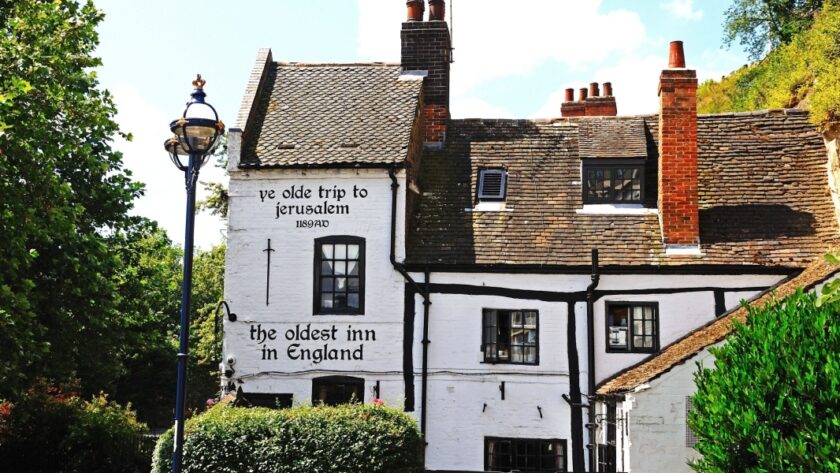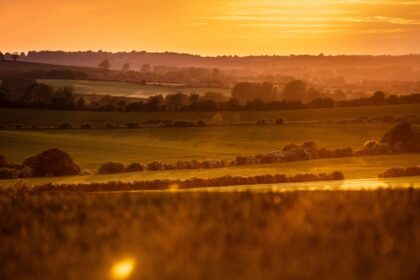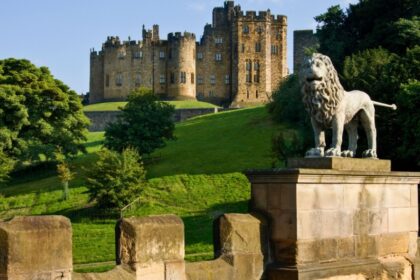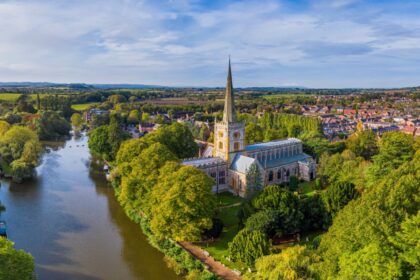The East Midlands is a bit of an enigma. It doesn’t boast, it doesn’t bluster, and it rarely makes headlines unless someone unearths a Roman mosaic under a Lidl. And yet, tucked between the flash of the South and the grit of the North, the East Midlands is one of the most quietly interesting, historically rich, and downright likeable corners of Britain. It’s the sort of place where you come expecting very little and leave wondering why more people haven’t raved about it sooner.
Robin Hood and Nottingham’s underground surprises
For starters, this region has pedigree. Big, myth-drenched, arrow-wielding pedigree. This is Robin Hood country, and if you can resist the romance of the story, the outlaw, the Sherwood Forest hideouts, the bit about robbing the rich and giving to the poor, then frankly you may be beyond help. The city of Nottingham runs with this theme quite enthusiastically. You’ll find a castle, several statues, themed pubs, and a man in green tights giving walking tours, depending on the time of year. But look beyond the legend, and Nottingham reveals itself as a vibrant, forward-looking city with a real cultural hum, all indie cinemas, Victorian pubs, live music, and a cave system beneath the streets that’s significantly larger than anyone has any business expecting.
Derbyshire’s peaks, puddings, and peculiar charm
To the north lies Derbyshire, where the East Midlands brushes up against the edges of the Peak District and immediately gets all rugged and outdoorsy. It’s a land of gritstone crags, sweeping moors, and sheep that eye you with mild disapproval. Towns like Bakewell, home of the eponymous tart (and yes, there is a fierce debate about which bakery makes the “real” one), and Buxton, with its spa-town grandeur and excellent water, offer the perfect base for walking, eating, and pondering whether you’ve earned a second slice of cake.
Matlock Bath, meanwhile, looks like someone tried to build a seaside resort in the middle of the countryside, complete with arcades, fish and chips, and motorbikes on weekends. It’s eccentric in the best way. And just down the road is Heights of Abraham, a hilltop park you reach via cable car, because apparently someone in the 18th century thought: “You know what this scenic gorge needs? A bit of drama.”
Leicestershire’s hidden royalty and rocket ships
To the south and east, you’ll find Leicestershire, a county that has mastered the art of underselling itself. This is where King Richard III was found under a car park, a fact the city of Leicester has quite understandably embraced with full medieval flair. The visitor centre dedicated to his discovery is superb, and the cathedral where he now rests is a dignified, beautiful spot, though you do occasionally get the odd sense that even Richard would have been surprised at how things turned out.
Leicester itself is one of Britain’s most culturally diverse cities, and it wears this proudly. There are incredible food markets, Indian sweets that ought to be illegal in the best way, and a genuine warmth that’s hard to fake. The National Space Centre is here, too, in a rather large rocket-shaped building that looks like it landed by accident, but is in fact full of excellent exhibits and educational wonder.
Lincolnshire’s scale, subtlety, and surprise
Then there’s Lincolnshire, often unfairly reduced to flat fields and tractors in the national imagination. Yes, it’s flat in places. Yes, there are a lot of tractors. But Lincolnshire is far more interesting than its stereotype. For one thing, it’s massive, so large and so varied that driving across it feels like a road trip through four different counties. There are the Wolds, rolling and quietly beautiful. The Fens, mysterious and misty. And the coast, which is an entire world of its own, part caravan utopia, part wildlife haven, part Victorian time warp.
The city of Lincoln is an absolute gem, perched dramatically on a hill (the only real one for miles), crowned by a cathedral that used to be the tallest building in the world and still knows how to make an entrance. The surrounding old town is all cobbles, tearooms, and bookshops, and if you can manage the climb up Steep Hill without stopping, you probably deserve a medal. Or a pork pie.
Towns, tarts, and tales worth the trip
The East Midlands also lays claim to some quietly remarkable villages and market towns. Stamford in Lincolnshire looks like it was carved from honey and designed as a backdrop for Austen adaptations (which, incidentally, it has been). Melton Mowbray is home to the pork pie and a cheese so strong it could probably hold its own in a pub fight. And Ashbourne, tucked near the Derbyshire border, is a lovely jumble of Georgian buildings, antique shops, and the occasional game of medieval football that turns the whole town into a pitch.
Understated riches and everyday magic
What really defines the East Midlands, though, is its understated richness. There’s no fanfare here, no glitz, no need to elbow other regions out of the way. Instead, you get history that actually happened here, not just in textbooks. Countryside that’s walked, not worshipped. Towns and cities that surprise you not with how flashy they are, but how real they feel.
It’s a region of quiet confidence, of hearty food and honest welcomes, of Roman roads and Saxon churches and railway museums tucked into unlikely corners. It doesn’t care if you’re impressed, but if you pay attention, you probably will be.
And if nothing else, there’s always a Bakewell tart waiting at the end of the day.





